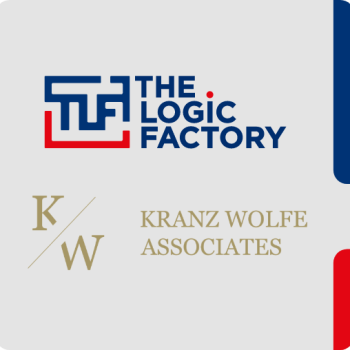Strengthening Metals Supply Chains Amidst Rising Uncertainty and Complexity
A Storm is Coming – Is Your Metals Supply Chain Ready to Sail Through It?
Historically, capital intensity was a critical factor in optimizing metals supply chains. Those who have been in the business long enough will be aware of the ongoing battles around inventory and maximization of output. In recent years, we’ve had low-cost capital combined with a certain amount of overcapacity. Looking back to pre-covid times, we can say there’s been a period of relatively stable demand and supply.
Even against that relatively calm backdrop, supply chain teams have encountered planning issues from time to time. Today, however, manufacturers face bigger and more complex challenges than ever before. We see a “perfect storm” on the horizon for metals supply chains. A reduced focus on investing in the supply chain has prevailed for a while now, which won’t help to navigate through the oncoming storm. The good news is that it’s not too late to boost readiness and get the supply chain in better shape.
The Ingredients For a Potential Perfect Storm
- Supply uncertainty: Industry players face new uncertainties around raw material availability, transport disruptions, geopolitics, and regulation. Furthermore, COVID-19 introduced unforeseen levels of supply and demand uncertainty. Planners must react quickly to disruptions. Scenario planning is key. A KMPG report highlights the need for increased flexibility to adapt to this new landscape.
- Price and demand volatility: The metals industry is highly sensitive to price and demand fluctuations. Rapid changes can arise, driven by factors such as energy or raw material costs. March 2022 already saw a 250% increase in Nickel prices the space of 3 days. Such volatility impacts planning, inventory management, and production scheduling. The recent spikes in energy costs force companies to take the fluctuating energy prices into account when planning and scheduling their energy-intensive equipment.
- Environmental and sustainability concerns: For obvious reasons, the metals industry is heavily on the radar when it comes to environmental impact. Sustainable production has quickly evolved from a marketing slogan to being crucial in maintaining market position. While new production technologies are promising, they will take time to mature. In the coming decade, we will need to do “more with less” when it comes to energy and resources. That’s a big additional challenge for the Supply Chain Manager.
- Outdated IT support: Across the industry, Enterprise Resource Planning (ERP), and planning solutions are reaching their end of life. At the same time, supply chains are extending toward true end-to-end planning. Data has become even more scattered and fragmented. Pieces of it are often knit together with spreadsheets, and that’s far from an ideal situation.
- The quest for talent: Europe, in particular, will have a brain drain with professional planners. Workers who literally grew up in the plant will retire and with them goes decades of experience. It won’t be easy to build up a new generation of supply chain professionals either. In general, talent is scarce. The supply chain of the future will also demand different skills, including strong analytical capabilities. Organizations will have to structure, and to some extent automate specific business knowledge, which is fading away faster than anticipated.
- Gen Z, the future buyers: Alongside the scarcity of talent, a new generation of buyers and consumers is having an impact. They have new ideas on what deserves customer loyalty. Ordering end products on mobile devices with next-day delivery is now the status quo. These new expectations will test the limits of metals supply chains.
- Increasingly complex products and supply networks: The metals industry is experiencing an increase in both end-product complexity and customer-centricity. This trend is likely to accelerate with more product diversity and the resulting smaller lot sizes. Products aside, we also expect rapid growth in supply chain complexity. The importance of specialized subcontractors and cross-company production is set to increase. This blend of complex products and a complicated supply chain makes it more difficult to manage and synchronize the end-to-end supply chain.
- Capital cost is rising: Economic uncertainty and rising inflation will push us into a situation where capital costs cannot be ignored and choices must be made. The Chief Financial Officer will become a stronger stakeholder in supply chain decisions, especially where they impact working capital.

The Supply Chain Planning Mindset Needs to Change
Metals companies are somewhat hesitant to embrace new technologies in the supply chain arena. Some advanced planning solutions are already out there, with supports such as digital twins, advanced analytics, or what-if scenarios. In general, however, the technology used in metals supply chain management is not on par with other industries. There is still some work to be done and it involves looking beyond spreadsheets and ERP.
Spreadsheets and ERP systems are just not enough
For many manufacturers, planning and scheduling are core to production. Spreadsheets and ERP systems are often used for production scheduling and transaction processes, without the best results. They simply don’t bring in the agility that’s needed.
Spreadsheets don’t work for production planning and scheduling
- They are inflexible and cannot handle large volumes of data. This is not helpful in an industry where planning means managing an array of variables such as material availability, order quantities, and scheduling constraints.
- Complex calculations are needed to optimize production sequences, consider machine capacities, and minimize changeovers. With little to no automation capabilities, spreadsheets are time-consuming and prone to error.
- They are often used individually, limiting visibility and collaboration across stakeholders. In metals manufacturing, effective production planning requires a joint effort from different departments like production, procurement, and/or logistics. Spreadsheets hamper efforts to have real-time collaboration, communication, and coordination.
Fixing the ERP won’t work either
- ERPs are critical for standard processes like order entry, invoicing, and inventory valuation. They cannot, however, handle a dynamic metal production environment. It’s more driven by capacity than materials. Logic like characteristic-based planning, campaigns, capacity reservation, batching, order combining, second grade, alternative routes, and flexible lead times are just too complex.
- ERPs are, by definition, standard, generalized solutions, but each metals business has its unique planning scenarios. The ERP can therefore create gaps in planning, with missed opportunities to save costs or boost profits. Additionally, possibilities to create unique strategic advantages through cost and flexibility are lost with a standard solution.
- Planning and scheduling are not the core focus of ERP solutions. Configuring them for an individual manufacturer can be extremely difficult – if possible at all.

Sail Through the Storm With an Integrated, Hybrid Platform
Implementing a new system will never be a silver bullet for supply chain challenges. There’s also work to do on the process and people side of things. On the other hand, professionals are unanimous in saying that without the support of an adequate IT platform, it will be a hard battle with limited chance of success.
A platform that delivers for your business is what’s needed from a system perspective. It should be one with the capacity to handle your specific planning needs and end-to-end supply chain across different legal entities and contributors. The solution should be as standard as possible, without neglecting the uniqueness of your critical processes. This may mean mixing solutions from different vendors, contingent on proper implementation and integration. We are not alone in arguing for this. Baris Selcuk also notes the importance of an advanced planning and scheduling solution alongside an ERP. That’s because both perform different functions. ERPs centralize and standardize different business processes in one place. Advanced planning and scheduling solutions support decision-making, what-if scenarios, and fast, complex computing calculations.
This is of particular importance in the metals industry, where vendors of these solutions are proven to understand the uniqueness of metals. They can meet or exceed requirements, offering AI and optimization capabilities to support critical business functions. That opens up further opportunities to increase efficiency, service, and asset utilization.

Find the Right Solutions and Implementation Partners
An advanced planning and scheduling solution that’s flexible and configurable to the complexity and constraints of your business will help you to realize its potential. DELMIA Quintiq is that solution, designed and proven to solve the unique metals industry puzzles you face every day. With a strong history in the metals industry, DELMIA enables orchestration across value networks, providing solutions to collaborate, model, and optimize operations.
For implementation and consultancy support, the partnership between Kranz Wolfe and The Logic Factory blends in-depth sector and supply chain planning knowledge, supported by a strong customer support service.
Our Team Can Help
The coming decade will be difficult for metals supply chain teams as we face the prospect of a “perfect storm”. One thing is certain, the right support will help to overcome the challenges ahead. With over 20 years of experience and a proven track record in the industry, our team is ready to help. Talk to us and discover the platform, agility, and support that will take your organization into the future.






